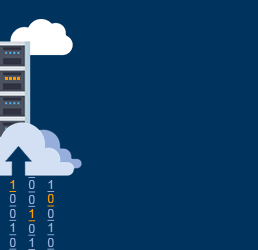New on LowEndTalk? Please Register and read our Community Rules.
All new Registrations are manually reviewed and approved, so a short delay after registration may occur before your account becomes active.
All new Registrations are manually reviewed and approved, so a short delay after registration may occur before your account becomes active.

















Comments
Is it SSH via shared hosting? If so, sudo isn't available. But if it's a VPS, you can switch to the root account and install sudo. The command is variant, depending on the Linux distro you're using.
Just install sudo and you're off.
Booooooring
dangggg it is ssh via shared hosting. so that will be a problem.
Okay. Try this: sudo apt install sudo
Now we’re getting somewhere
Or
sudo whereis sudo
sudo which sudo
How to reinstall sudo:
sudo apt-get purge sudo && sudo apt-get install sudo
Sir now it is asking me to send bobs to confirm
Do it
Penus for extra NVMe dick space
Edit: sudo touch penus && sudo rm boobie (becuz men r cool)
have you tried restarting your vps?
You guys do not login via root for everything?
Have you met google?
PLOT TWIST: OP is using OpenBSD and should be using the more secure doas.
OK, that's probably not it...
what is your distro?
install
sudoordoasMaybe you should try
suIf you are in webhosting ssh, you don't need to use sudo
You can get a compser.phar by doing the following
Then run
php composer.phar installeasier
sudo apt reinstall sudojust install doas bros
Think about it
Nah, that's not a problem. Ask support for the root password, use the su command, install sudo, and add your user to the sudo group.
Also ask for custom iso
It's probably cloudlinux, so wheel group
su - && apt install sudo -y && usermod -aG sudo $user
And this is why I love LET
Is a similar command to:
man manNever. I leave root disabled and have been doing it for a very long time. I use sudo. For system management and configuration, I run sudo from an admin account and avoid the root account after that. The admin account is used only for system maintenance and management. Remote SSH and the regular personal work gets done from separate unprivileged accounts. I rarely find a Linux distro where sudo is not installed by default, but it happens. Use apt or dnf or yum or pacman or whatever to install sudo.
Some systems force you to have a root account, such as OpenVZ VPSs. For those systems, I give the root account a long strong password, create an admin account for managing the system and unprivileged accounts for SSH and regular unprivileged work. After that I use the admin account with sudo for "root" activities, block the unprivileged SSH and working accounts from sudo. I disable the root account for SSH and regular screen logins and do not use root directly again, not if I can help it.
In fairness to others and to admit my true laziness, my fingers remember and type the command "sudo su -" all too easily. In essence, I am logging in as root from the admin account anyway. It would be better if I could acquire the habit of prefixing each command with "sudo" as intended, but at least the root account is safer.
This is considered good traditional security practice, but some security experts believe that it makes little real difference. I will not argue with them, but now you know what I do and can decide if the extra effort is worth the perceived benefits.
I just turn on every security thing in sshd_config, disable root password, and use root with my ssh key
I'm way too lazy for sudo su